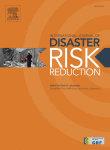
We analyze the contributions of integrated watershed management (IWM) to disaster risk reduction and community development across three case study sites in Nepal. A mixed-method case study approach adopted in the study used policy review, focus group discussions, key informant interviews, and semi-structured interviews to collect data in Kulekhani watershed, Bangari-Dudhoura watershed, and Harion watersheds. Our study shows a significant reduction in the number of disasters along with notable improvements in land cover and multiple benefits to the community. Across the study sites, we noted a significant increase in forest cover with sightings of wildlife and an increase in water levels in areas that were previously highly degraded. Among the benefits to the people are the restoration and regeneration of forests that have been conserved and handed over to the communities. Our findings indicate that, through community forestry under IWM, the local people have not only benefitted from the sale and use of forest products like timber, fuelwood, and fodder but their capacities, especially that of women, in terms of communicating and networking, have improved. However, many challenges remain. Limited coordination among different sectors, over-lapping of responsibilities among institutions and authorities, limited upstream-downstream linkages, and less priority for disasters risk reduction in IWM are among them. Therefore, we conclude that prioritizing disaster risk reduction actions in IWM across Nepal and advocating for horizontal as well as vertical collaboration and cooperation to strengthen upstream-downstream linkages and to augment the socio-ecological resilience of the watersheds are necessary.